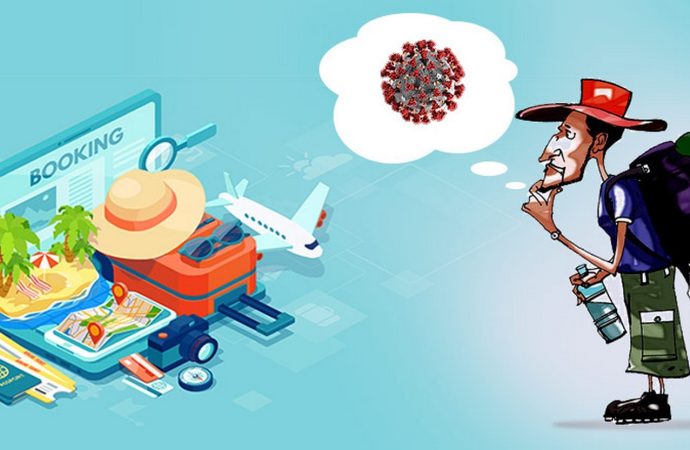The COVID-19 pandemic has been a seismic event for the global tourism industry, bringing unprecedented challenges and disruptions. As the world gradually emerges from the grip of the pandemic, the recovery of global tourism is a topic of significant interest and importance. This article aims to provide an informative overview of the current state of
The COVID-19 pandemic has been a seismic event for the global tourism industry, bringing unprecedented challenges and disruptions. As the world gradually emerges from the grip of the pandemic, the recovery of global tourism is a topic of significant interest and importance. This article aims to provide an informative overview of the current state of global tourism recovery, highlighting key trends, challenges, and prospects for the future.
The Impact of COVID-19 on Global Tourism
The pandemic’s impact on global tourism has been profound. According to the United Nations World Tourism Organization (UNWTO), international tourist arrivals dropped by 74% in 2020 compared to the previous year, marking the worst year in tourism history. The sudden halt in travel led to massive job losses and the collapse of numerous businesses within the sector. The ripple effects were felt across related industries such as hospitality, aviation, and entertainment.
Key Trends in Tourism Recovery
As vaccination rates increase and travel restrictions ease, the tourism industry is witnessing signs of recovery. Several key trends are emerging that shape the post-pandemic tourism landscape:
Domestic Tourism Surge: With international travel restrictions still in place or being lifted gradually, many people are opting for domestic travel. This trend has provided a much-needed lifeline for local economies and small businesses. Countries like the United States, China, and Australia have seen significant increases in domestic tourism.
Health and Safety Prioritization: Travelers’ priorities have shifted, with health and safety becoming paramount. Enhanced hygiene measures, contactless services, and flexible booking policies are now standard practices in the industry. Destinations and businesses that can assure travelers of their safety are more likely to attract visitors.
Sustainable Tourism: The pandemic has accelerated the demand for sustainable and responsible tourism. Travelers are increasingly aware of their environmental impact and are seeking eco-friendly destinations and experiences. This shift presents an opportunity for the industry to rebuild in a more sustainable manner.
Digital Transformation: The adoption of digital technologies has been crucial in navigating the pandemic. Virtual tours, contactless payments, and digital health passports are becoming commonplace. The integration of technology in tourism operations is expected to continue, enhancing the overall travel experience.

Picture by: Yandex.com
Challenges to Overcome
While the signs of recovery are encouraging, several challenges remain:
Variable Recovery Rates: Recovery rates vary significantly across regions. While some countries are experiencing a rapid rebound, others, particularly those heavily reliant on international tourism, are still struggling. Factors such as vaccination rates, travel restrictions, and economic conditions play a crucial role in this disparity.
Labor Shortages: The tourism industry is facing labor shortages as former employees have moved to other sectors or are hesitant to return due to job insecurity. This shortage can hinder the industry’s ability to meet the growing demand for travel services.
Financial Strain: Many businesses within the tourism sector are still grappling with financial strain due to prolonged closures and reduced revenue. Access to financial support and investment will be crucial for their survival and growth.
Traveler Confidence: Restoring traveler confidence is a significant challenge. Uncertainty regarding new variants of the virus and potential travel restrictions can deter people from making travel plans. Clear communication and consistent safety measures are essential to rebuilding trust.
Prospects for the Future
Despite the challenges, the future of global tourism holds promise. Several factors contribute to a positive outlook:
Pent-Up Demand: There is a considerable amount of pent-up demand for travel. People who have been confined to their homes for extended periods are eager to explore new destinations and reconnect with loved ones. This demand is expected to drive a robust recovery in the coming years.
Innovation and Resilience: The tourism industry has shown remarkable resilience and adaptability. Innovations such as remote work and “workations” (work vacations) have created new opportunities for travel. Businesses that can innovate and adapt to changing consumer preferences will thrive.
Government Support: Governments worldwide recognize the importance of tourism for economic recovery and are providing support through financial aid, marketing campaigns, and infrastructure development. Collaborative efforts between the public and private sectors will be crucial in revitalizing the industry.
Sustainable Growth: The emphasis on sustainable tourism presents an opportunity for long-term growth. Destinations that prioritize environmental conservation, community engagement, and cultural preservation are likely to attract conscious travelers and benefit from repeat visits.
Conclusion
The recovery of global tourism post-pandemic is a complex and multifaceted process. While challenges remain, the industry is showing signs of resilience and adaptability. By embracing key trends such as domestic tourism, health and safety measures, sustainability, and digital transformation, the tourism sector can navigate the path to recovery. Collaborative efforts, innovation, and a focus on sustainable growth will be essential in ensuring a robust and resilient future for global tourism. As the world continues to reopen, the tourism industry stands poised to once again connect people, cultures, and economies, fostering a sense of global unity and exploration.
















